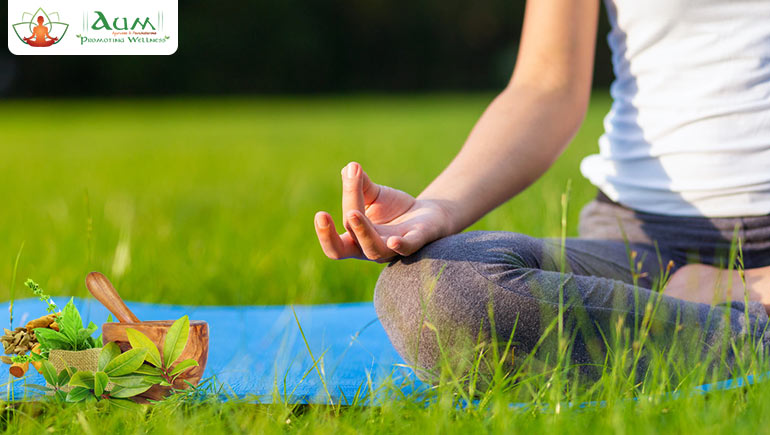In today’s times, people have become more health conscious. The need for an integrated approach is felt intensively as we all are going through a tough time where in conventional system of medicine doesn’t seem a convincing role in disease prevention. This is where, Ayurveda, an ancient indigenous science of life, comes in life. Recently, we are seeing a rising interest in Ayurveda. This is because Ayurveda primarily aims at physical as well as mental well being as against Allopathy, which is mainly disease centric and focuses on super specialist practise thereby hardly contributing to prevention of disease.
Prevention is most important aspect of medicine which has been neglected for so many years but recently it has come to a fore front and is being taken in to account in management of health.
For example, as part of the 2020 impact goals, the American Heart Association (AHA) has set out seven ideal health goals – non smoking, maintaining normal weight, increased physical activity, a healthy diet, normal blood lipid levels, normal blood pressure and a normal fasting glucose. An analysis of the US National Health and Nutritional Examination Survey (NHANES) showed, that individuals who met five of the seven ideal metrics of AHA, had a 78% reduction in the hazard ratio for all causes of mortality. These AHA’s Life’s Simple 7 metrics develop to measure and promote cardiovascular health and also predicts a lower risk of CKD.
Having a healthy lifestyle change just through healthy diet and exercise, metabolic diseases are reduced considerably. Traditional Medicine, which emphasizes these aspects in their practice plays a very important role. Therefore, the medical fraternity are now talking more about preventive guidelines and prevention of disease.
Fortunately we have inherited the legacy of ancient science of life, ‘’Ayurveda’’, based on a philosophy that good health comes from integrating all aspects of life such as lifestyle, food, conduct, exercise and lastly medicines.
Every human being is born with a unique constitution which are broadly divided into three specific prototypes, based on “Tridosha”. “Tridoshas” viz Vata, Pitta, Kapha. These Tridosha are three basic driving forces present within our bodies in a specific combination and perform their specific functions. This combination of doshas help define our physical, mental and emotional make-up that keeps our body in homeostasis and in turn maintains healthy body state.
Ayurvedic approach primarily emphasizes prevention and maintenance of health स्वस्थस्य स्वास्थ्य रक्षणम् आतुरस्य विकार प्रशमनम् च ||Next to prevention is treatment of disease.
In Swasthavritta, Ayurved advocates all the preventive principles which are necessary for maintaining health. Dinacharya, Ritucharya (the daily and seasonal regimens respectively) and Sadvritta are three essentials for healthy life in order to keep the Tridoshas in a state of healthy equlibrium and metabolism (agni) in proper order.
But these prevention strategies should be employed at the earliest stages of development so that these practices become a way of life. Rather it should be applied since the time of conception and during pregnancy to obtain healthy progeny. As per scientific data, 30% of the children born in India are of low birth weight. Chances of developing metabolic diseases is relatively high in these low birth weight children. But with adopting garbhdharan samskar and garbhini paricharya which mainly deals with maternal nutrition, help to improve nutritional status before conception and during pregnancy.
Even after taking proper care and despite adopting prevention strategies sometimes these three doshas go out of the balanced state, disease eventually occurs.
In Ayurveda, an holistic approach is taken for the prevention and treatment of disease. The human body is considered as one unit when it comes to a treatment part. The Ayuvedic Physician evaluates a patient’s health by determining his or her inherent constitution and imbalanced state of Doshas causing ailments. Treatment is based on administrating a combination of herbs and managing diet, panchkarma, lifestyle changes etc. to bring the doshas and body back into homeaostasis and to alleviate the disease.
समदोषः समाग्निश्च समधातु मलःक्रियाः।
प्रसन्नात्मेन्द्रियमनः स्वस्थइतिअभिधीयते॥ (सुश्रुत संहिता सूत्रस्थान १५/१०)
Translated it means,
A person is healthy who’s body, mind and soul are in normal state and all physiological actions are proper and in sync unlike the person who is physically healthy but mentally and spiritually not in proper state.
Thus, Ayurveda Practitioners are rightfully forging ahead on the right path as shown by their Acharyas i.e. Teachers thus trying to achieve the state of overall well being and health of their patients.

